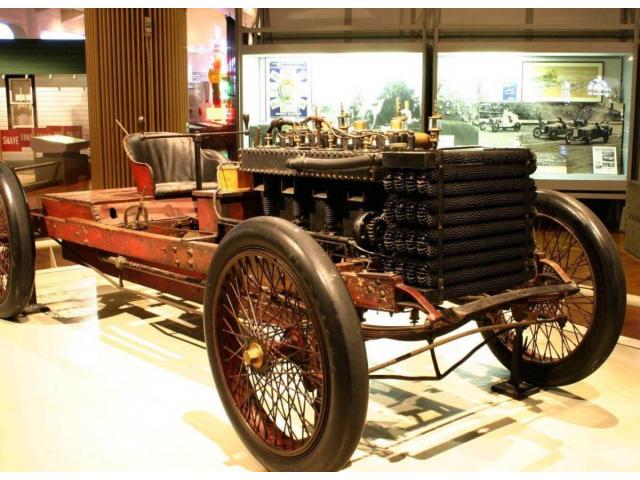1902 Ford 999 Race Car
- Brand: Ford
1902 Ford 999 Race Car
The Ford 999 was a nameplate for two different but similar racing cars built by Henry Ford in the early 20th century. Although they started as separate entities, they were virtually identical mechanically, and parts (and ultimately names) were swapped between them as needed, making their personalities and legacies inseparable. Henry Ford's creativity early on showed an interest in racing cars, building and driving a 26 horsepower (19 kW) model in 1901, which won a race against Alexander Winton and other contenders. It was the proceeds from this race that Ford used to create the Henry Ford Company.
In March 1902, Ford left his initial company due to disputes with his shareholders and Henry Leland, taking with him $900 and plans for a planned racing car. In Ford's absence, Leland took over the company, which later became the Cadillac Motor Company in 1902. Henry Ford worked with cyclist Tom Cooper and a team of several assistants to create two similar racing cars, which were not yet named. They were painted red and yellow respectively. The result was a huge engine with a bare chassis attached to it, without any bodywork. Both cars were extremely carefully designed, with an inline 4-cylinder engine with a volume of 1156 cubic inches (18.9 liters), a flywheel weighing 230 pounds (100 kg), a cylinder diameter of 7.25 inches (184 mm), and a piston stroke of 7.0 inches (180 mm). The power was listed at 70 to 100 horsepower (75 kW). There was no rear suspension or differential, and the steering was controlled by a rough turning metal rod similar to a straight handlebar of a mountain bike, but with vertical handles on the ends to control it. The total cost of the project was $5000. Although Ford's name was associated with cars and subsequent legend, he sold his stake in them for $800 to Barney Oldfield and Cooper when the cars failed to start during a test drive two weeks before the first race. Ultimately, Ford gave up his share of the racing money, but retained the right to advertise and promote the cars, which ensured his image for their potential success. Meanwhile, he created the Ford Motor Company, which by the end of 1903 surpassed Winton in production volume.
In the summer of 1902, Cooper and Oldfield continued their work and earned a red car. The car was named 999 after the Empire State Express No. 999. No. 999 was an American 4-4-0 steam locomotive that on May 10th set a world speed record of 112.5 miles per hour (181.1 km/h) in 1893, making it the first artificial transport capable of traveling over 100 miles per hour (160 km/h) on its own power. The yellow car was named the Arrow because of its connotations of a sleek arrow flying through the air. Despite having absolutely no driving experience, Oldfield's racing career began by learning to race on the 999. In a match rematch (which was originally planned by Ford), Oldfield easily won.
The Model 999 set a speed record on the track in Gross Pointe, went on tour across America, and won many other victories. Cooper retained ownership of the car for his racing career, while Oldfield eventually continued his racing career with Winton, against whom he initially raced. The Icy Speed Record of the Arrow was also a successful racing career, but the most famous incident was yet to come. It crashed in September 1903 during a race, resulting in the death of driver Frank Day. However, Henry Ford bought the broken car and repaired it to make a high-speed run across a frozen lake. He renamed it 999, as the original red car was no longer in production, and the press called it the "new 999," the "Red Devil," or a combination of the two. On January 12, 1904, in New Baltimore, Michigan, Henry Ford personally drove the renamed 999 with his mechanic, Ed "Spider" Huff, at the wheel.
A new land speed record was set - 91.37 miles per hour (147.05 km/h) on an ice track laid in Anchor Bay on Lake St. Clair. It only lasted a few weeks, but that was enough time to attract more attention to Ford's new company.
Descriptions from Wikipedia, illustrated by Karstyling.
| Specification | |
| Production Start | 1902 |
| Country of origin | USA |


































